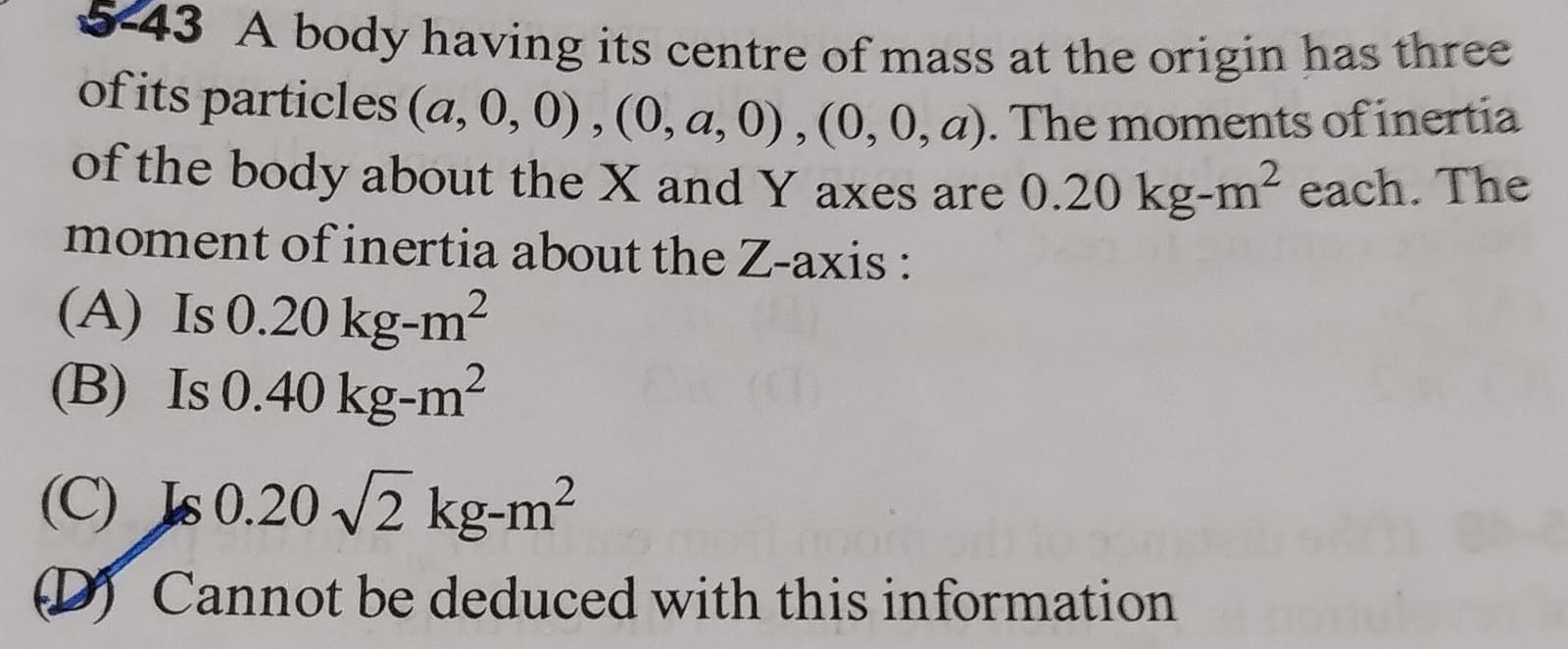Question
Question: A body having its centre of mass at the origin has three of its particles $(a, 0, 0), (0, a, 0), (0,...
A body having its centre of mass at the origin has three of its particles (a,0,0),(0,a,0),(0,0,a). The moments of inertia of the body about the X and Y axes are 0.20 kg-m² each. The moment of inertia about the Z-axis :

Is 0.20 kg-m²
Is 0.40 kg-m²
Is 0.202 kg-m²
Cannot be deduced with this information
Is 0.20 kg-m²
Solution
The given particle positions (a,0,0), (0,a,0), and (0,0,a) exhibit symmetry with respect to cyclic permutation of the axes. Coupled with the fact that the moments of inertia about the X and Y axes are equal (Ix=Iy=0.20kg-m2), this strongly suggests that the body possesses symmetry such that the moment of inertia about the Z-axis is also equal to these values. This symmetry is characteristic of bodies with cubic symmetry about the origin when the axes are principal axes. Therefore, Iz=Ix=Iy.
